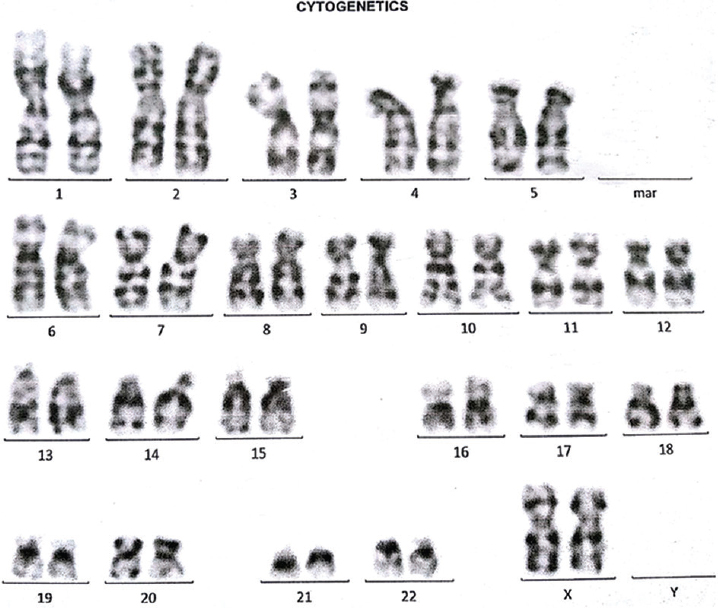Translate this page into:
Cyclopia syndrome with normal karyotype
*For correspondence: drdeya2011@gmail.com
-
Received: ,
This is an open access journal, and articles are distributed under the terms of the Creative Commons Attribution-NonCommercial-ShareAlike 4.0 License, which allows others to remix, tweak, and build upon the work non-commercially, as long as appropriate credit is given and the new creations are licensed under the identical terms.
This article was originally published by Wolters Kluwer - Medknow and was migrated to Scientific Scholar after the change of Publisher.
A one-eyed late preterm female neonate† was born of a non-consanguineous marriage in the month of December 2018, at the department of Gynecology and Obstetrics, R.G. Kar Medical College and Hospital, Kolkata, India. A diagnosis of a case of cyclopia was made on the basis of a partially divided eye in a single orbit, absent nose, proboscis above the eye (Fig. 1). Other noticeable anomalies included Polydactyly of hand. This condition was named after the single eyed giant 'Cyclops' in Greek mythology. The aetiology remains largely unknown. Some cases may have chromosomal abnormalities (namely trisomy 13), but karyotyping in this case was normal (Fig. 2). It is the severe most expression of holoprosencephaly syndrome, with severe facial dysmorphism. Supportive management was given, but the neonate died after one hour of birth. Antenatal ultrasonography should take a lead in early detection of such rare cases incompatible with life, and termination of the pregnancy should follow.

- The neonate having a partially divided eye in a single orbit, absent nose and proboscis above the eye.

- Normal karyotype map of the neonate.
Conflicts of Interest: None.





